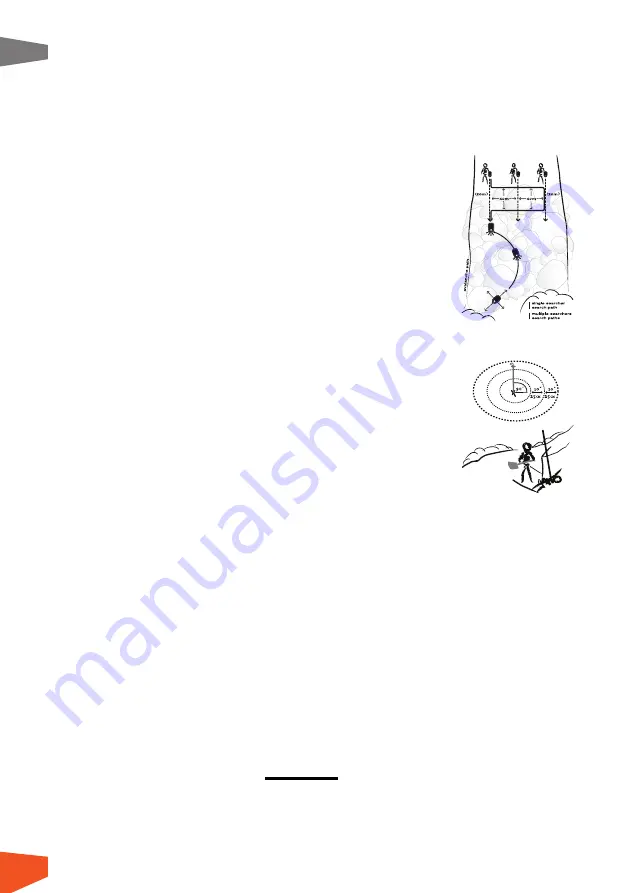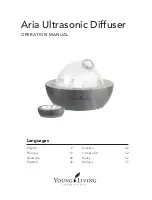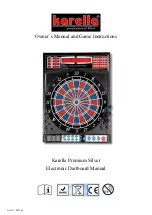
14
17
AVALANCHE RESCUE
This is a basic introduction to avalanche rescue techniques. On our website, you will also find a list of avalanche instructors. We strongly suggest
taking an avalanche course in your area before venturing into the backcountry. Each person needs a working beacon, probe and shovel - and must
know how to use them. Before leaving, call your local avalanche forecast center and determine the danger level and avalanche problem in the area
you intend to visit:
SEARCHING FOR VICTIMS
If a member of your group is buried, you must perform a beacon search. The objective is to find the strongest signal
(lowest distance reading) and immediately begin probing the area. In the event of a burial, switch all avalanche
beacons to search mode. The guidelines below assume the use of a digital beacon.
SIGNAL SEARCH:
If there is a “last seen point,” start your signal search there. Otherwise, start your signal search
at the top, bottom or side of the slide path. See diagram on right to establish a search pattern.
COARSE SEARCH:
Once a signal is engaged, align your beacon so that any of the center three lights are flashing
and move quickly in the direction it is pointing. Make sure the number in the distance display is decreasing. If it
is increasing, turn 180 degrees. Inside ten meters, move slowly and try to keep the center search light engaged.
FINE SEARCH:
Within three meters, use your beacon as close as possible to the snow surface and look for the smallest distance reading. Confirm
by “bracketing” in the perpendicular direction.
PROBING/PINPOINTING:
At the point where the distance has reached a minimum, probe the area in concentric
circles, with each probe hole about 10 inches (25cm) apart. Your probe should enter the snow perpendicular to the
slope. Once you have confirmed the victim’s location, leave the probe in the snow.
SHOVELING:
For best results, start shoveling at least one step downhill of the probe. Make sure your hole is at least
one “wingspan” wide. If there is enough manpower, then in burials of one meter or less, both shovelers should be
digging near the probe. In burials deeper than one meter, one person should dig near the probe with others downhill,
to move snow away from the hole.
© 2021 Backcountry Access, All Rights Reserved
The information contained in this manual is in various languages but only the English version will be relevant in case of conflict.
Backcountry Access and the BCA logo are registered trademarks of Backcountry Access, Inc. Alpride is a trademark of Alpride SA
US:www.avalanche.org
CANADA:www.avalanche.ca
EUROPE:www.lawinen.org
USER MANUAL / ENGLISH
Summary of Contents for FLOAT E2
Page 1: ...w w w b a c k c o u n t r y a c c e s s c o m ...
Page 2: ...CONTENTS ENGLISH 3 DEUTSCH 15 FRANÇAIS 27 ITALIANO 39 ...
Page 3: ......
Page 4: ... 4 s 4 s 4 6h s 1 6h 10s 1 6h 10s 1 6h 10s 1 10s SUMMARY OF LED STATUSES USER MANUAL ENGLISH ...
Page 53: ...BRUKSANVISNING SVENSKA 51 ...
Page 54: ......
















































